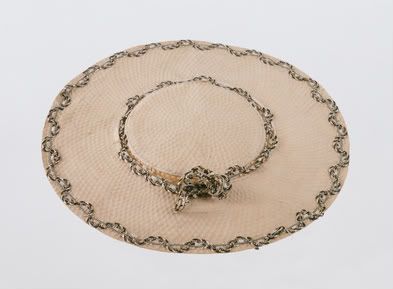Gutentag! Welcome to Day Five of Colonial Week everyone! Thank you all for your very kind comments so far on my efforts this week. They are greatly appreciated! :-)
Angelina returns to the stage today to show off a dress we purchased from Ebay seller sdls275, i.e. Heirloom Doll Designs. This seller occasionally offers things, but is not an Ebay regular at this point. So you have to keep checking the shop every now and then to see if things are for sale.
She makes marvelous colonial dresses with incredible detailing beyond what you'd expect to see in doll clothing. Sdls275 even made a sacque dress once upon a time, like the robe a la francaise we saw yesterday with the pleated backs. Very fancy. We didn't win that auction though. :'-( Oh well-- you can't win them all.
Luckily we did win this auction- a beautiful yellow, brown and pink dress! And we thought it would look extra nice on a dark-skinned doll- hence Angelina is wearing it for us. It came with the long, skirted jacket, the brown underskirt, two stomachers (one of which you see below), and a handcrafted necklace. A hat from a previous sdls275 purchase was added to top off the outfit. Doesn't she look amazing?!?
If you look closely at our pictures you will notice Angelina's sleeves have lace cuff accents. At this point in time these types of lace cuffs would have been removable from the dress so that they could be cleaned easily.
And another interesting point I can bring up with these photos--- yellow was actually the most popular color for wedding dresses in the early 1700s, not white.
During the colonial period it was viewed as improper for women to have their heads uncovered, which is why Felicity has so many caps and hats in her collection. She would have even worn a mob cap under a straw hat. Head coverings were important because women wanted to follow etiquette and stay untanned. Tans and freckles were not fashionable--- being pale was "in" because the aristocrats were pale. They didn't have to work outside; they were inside enjoying a life of luxury. So of course everyone else wanted to look like they had the money to relax inside all day too. ;-)
Here is a picture of an 18th century hat in the MET collection... just like what we see in Felicity's collection... flat, woven, and designed to keep the sun off your face....
So looking at Angelina you may notice that her hips seem to be a bit wider than usual. Heehee. That is because she is wearing a set of panniers from The Dollies' Dressmaker under her skirt. Sometimes they are called false hips or pocket hoops. This piece of clothing fills out the hip region of a woman or girl and supports heavy skirts, lifting them upward and showing off the expensive fabric of the dress. All of the dresses shown this week have had panniers underneath them.
During the 1700s panniers were very popular and throughout the century they became wider and wider. There were even dresses so wide that women had to go through a door sideways. And architecture changed to accommodate these fashions, making large double doorways necessary like you see at Versailles.
So here are some of those very wide style dresses from the MET collection and a portrait of Marie Antoinette in such a dress..... those panniers are very wide!
And here is one of the doorways at Versailles.... also very wide!
What do human panniers look like? Well they look very much like the kind that The Dollies' Dressmaker offers, only larger. Heehee. But there were other styles as well. Sometimes they were covered with cloth like those sold at DD, and sometimes just the wiring was covered. You can see two panniers from the MET collection below....
We said that funny word awhile back in this post... stomacher. Angelina's stomacher is the triangular piece of fabric that attaches to the inside of her jacket and sits in front of her chest. The one you see in the photos above has pink ribbons strung across it (just to help you ID what we are talking about). For human fashion, stomachers were very stiff and designed to keep your bodice very smooth. They also helped posture, as they don't really let you slouch.
A gown could look completely different if you switched out your stomacher. So a woman typically owned more than one. As you can see from the slideshow below, stomachers were highly embellished with embroidery work, lace, rosettes, etc. etc. They could be very expensive.
Underneath the dress and the stomacher a lady would wear a corset. They would be tightly laced (usually in the back) to give women a stylishly small waistline. Corsets were worn all the way up into the beginning of the 1900s. They weren't really designed for comfort; they tended to shift your organs around if pulled too tightly; and they could cause dizziness. So we are very lucky we don't have to wear them today to be fashionable. Although a comfortable, good-fitting corset can help improve your posture. ;-)
Here are a few pics of 18th century corsets, some of them were worn like a tank top, and others were strapless.... many of them are as decorated as a stomacher themselves, so they would have been worn without a stomacher....
Stay tuned for Day Six... our final day of Colonial Week! More handmade clothing, more history right around the corner!
And don't worry--- we will do another Colonial Week soon as we do have more colonial dolly fashions to show off. But for the rest of October (and probably into November) we will be talking about costumes and Halloweenie things before we move on to a new time period. :-)




No comments:
Post a Comment